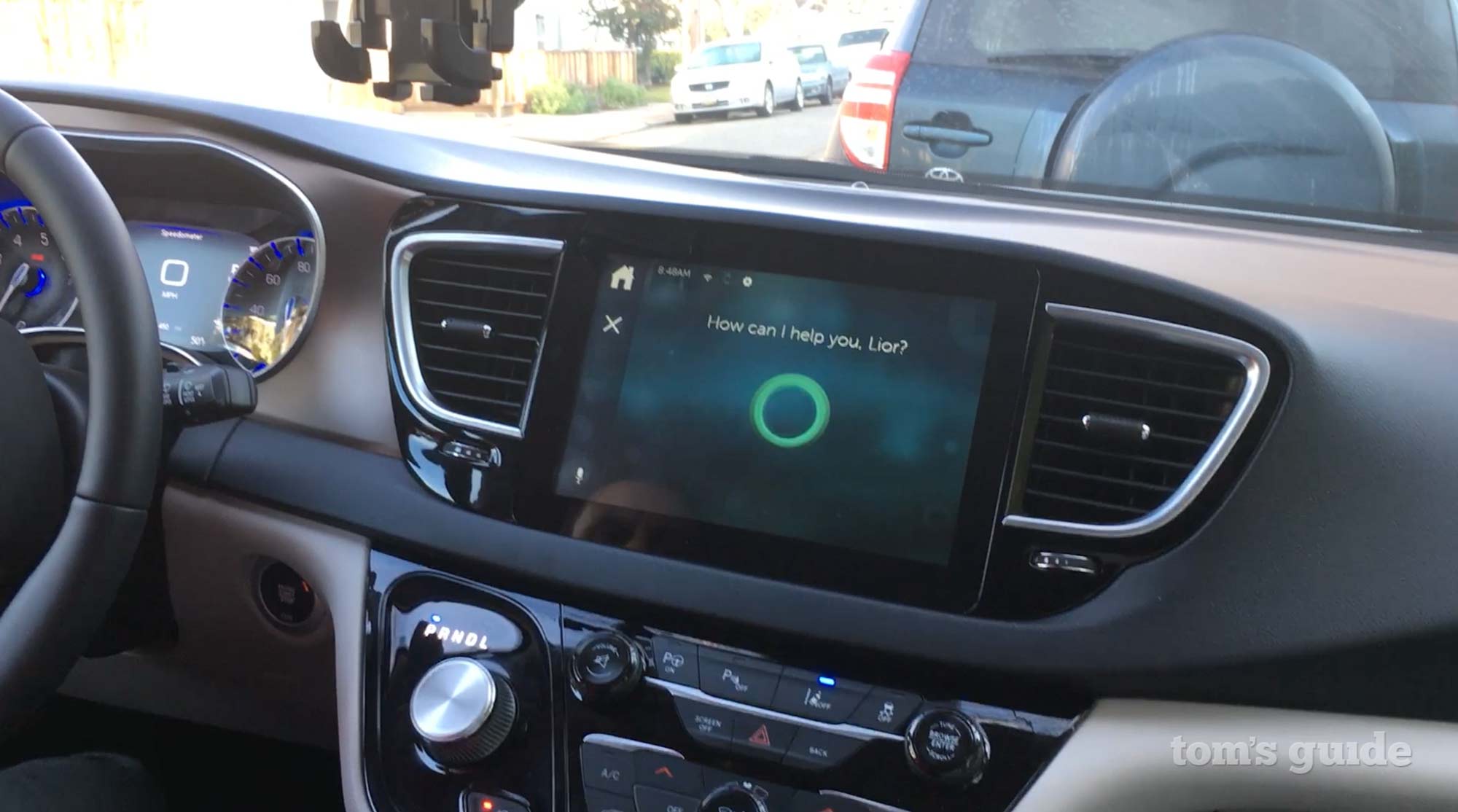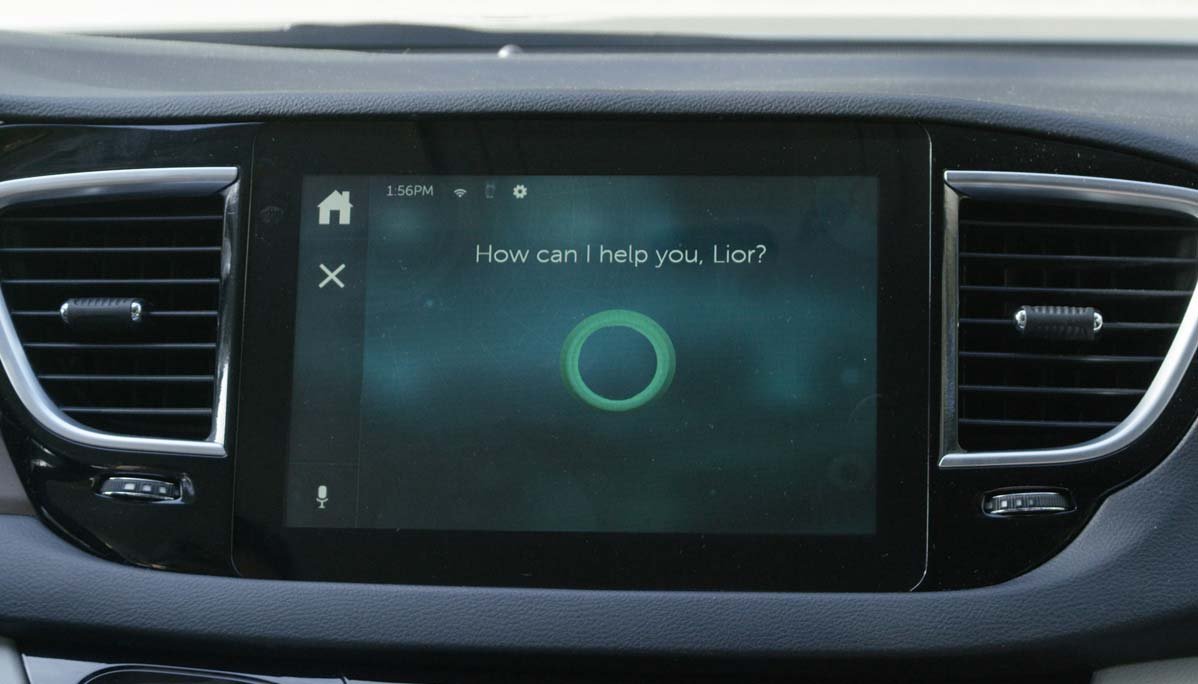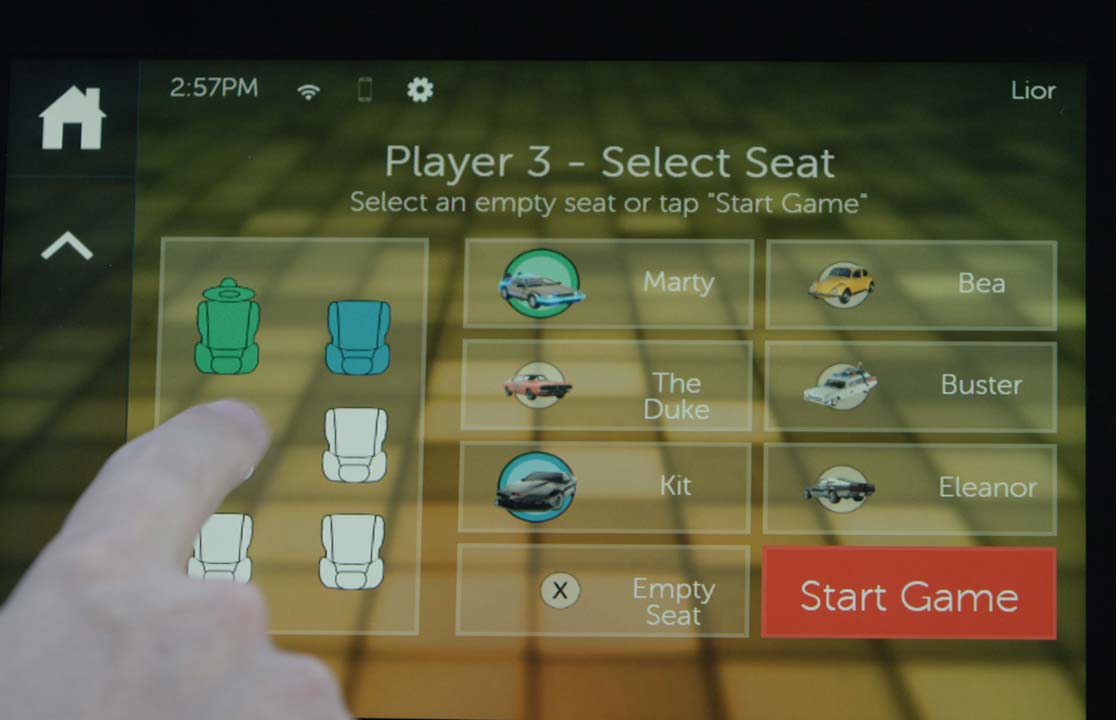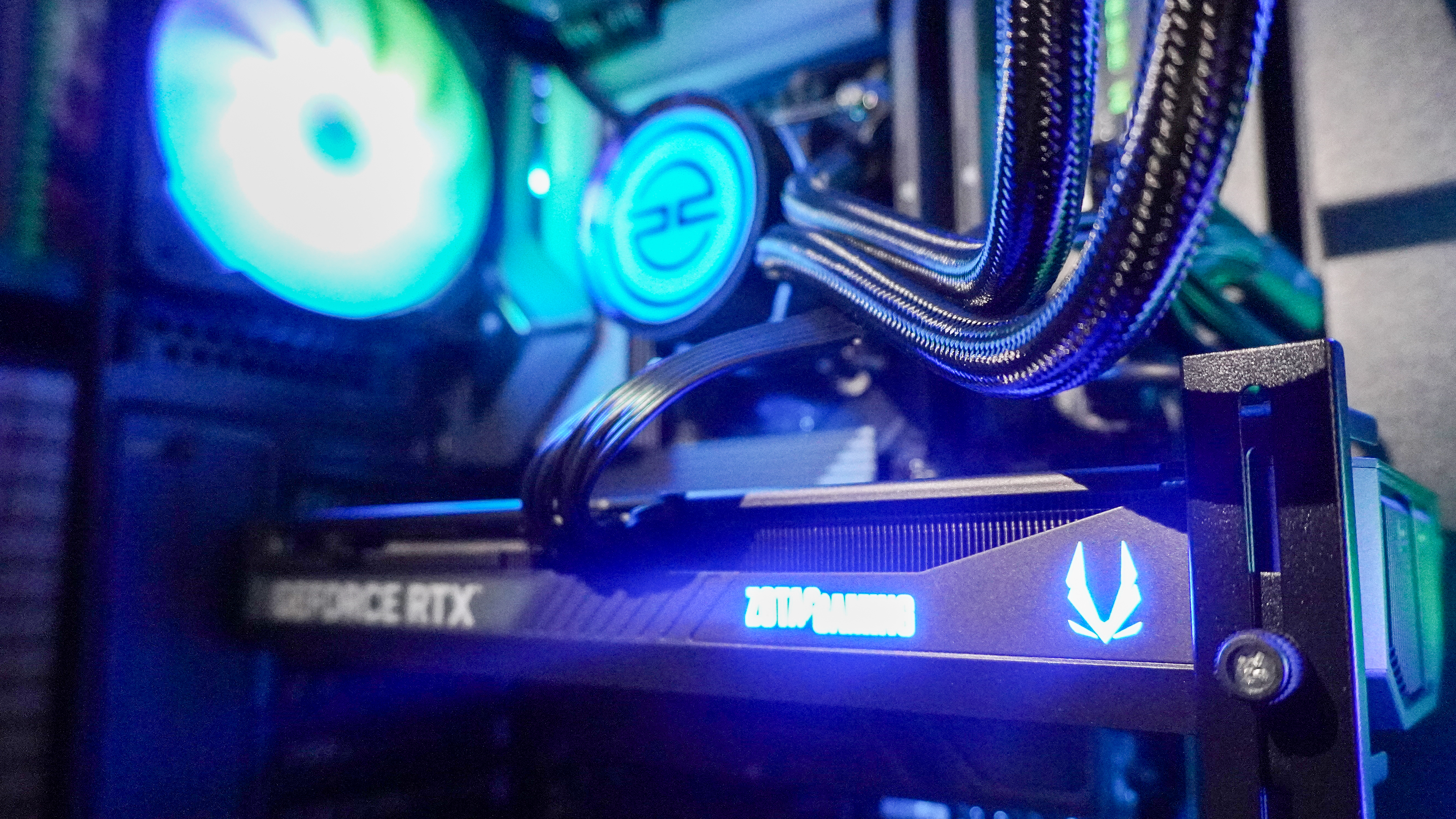I Rode Shotgun with Nuance's AI-Powered Auto Assistant
Dragon Drive uses artificial intelligence along with natural language and speech recognition to understand your voice commands when you hit the road.

When you've got both hands on the wheel and both eyes focused on the road, the last thing you want to do is start arguing with your voice-powered assistant about what exactly you were asking it to look up. Unfortunately, that happens a little bit too frequently on my road trips when my failure to use precise phrasing stumps Siri and sends me spiraling into road rage.
So imagine how pleasant it was when the folks from Nuance picked me up in a tricked-out Chrysler Pacifica loaded up with the speech recognition company's Dragon Drive automotive assistant, and I found out that Dragon Drive not only understood me perfectly but could handle two requests nearly simultaneously.

To show off Dragon Drive's ability to listen to two commands at once and understand both, Lior Ben-Gigi, a senior product manager at Nuance, told the automotive assistant to bring up a route to the Golden Gate Bridge and notify one of his contacts about our estimated arrival time. Dragon Drive produced a route and then told us a message about our arrival in an hour's time had been sent — pretty impressive stuff if you've ever struggled to make a voice-powered assistant understand just one of your commands.
Dragon Drive's trick: it's built on multiple layers that help the automotive assistant figure out and act on just exactly what you're saying. In addition to automatic speech recognition that can hear your dictated command and natural language understanding that can figure out the intent behind your words, Nuance has also added an artificial intelligence layer that's able to place your commands in context.
MORE: Siri vs. Alexa: Why Amazon Won Our 300-Question Showdown
All these things come together to make things easier on the driver, Ben-Gigi explained to me. "As a driver, I don't have to think too much," he said.
Dragon Drive, which Nuance developers for automakers to include in their in-car infotainment systems, can also tap into the sensors and diagnostic information of the car itself. In another demo, we plotted a course between my home in Northern California and San Diego; the Dragon Drive system calculated a route, but also threw in stops at gas stations when it calculated we would need to refuel the Pacifica.
"It can understand the distance [we're driving], that we have a certain amount of fuel, and it can calculate a detour that doesn't take a lot of time," said Ben-Gigi, pointing out that the gas stations selected by the driving assistant were conveniently located right of the freeway.
What I particularly appreciate about Dragon Drive is that it didn't seem to require a series of specific commands to recognize what you were saying. That's a byproduct of the system's prowess with natural language. Say "I'm cold," explained Nuance senior director of product marketing and strategy Eric Montague, and the automotive assistant would recognize that it needed to turn on the car's heating system.
The Pacifica minivan we used in the demo had been specially modified by the Nuance team. Whereas most cars with a Dragon Drive-powered assistant contain just two microphones, this car had six — all the better to show off the voice biometrics features Nuance has developed.
MORE: Best Smart Driving Apps for Dumb Cars
After registering your voice with the Dragon Drive system much in the same way you would with Siri or Google Assistant — you basically say "Hello, Dragon" a few times so that the assistant can learn the sound of your voice — you're able to control the voice commands of the car. There's a Guest mode, which allows someone like a passenger or a valet to operate limited commands, but info you might not want other people to access — your contacts, say — remains accessible only if Dragon Drive recognizes your voice.
Sign up to get the BEST of Tom's Guide direct to your inbox.
Get instant access to breaking news, the hottest reviews, great deals and helpful tips.

All those biometric microphones in a car can also let you and your fellow passenges pass the time on a road trip with a friendly game. To showcase the system's ability to recognize different voices, Nuance created a version of Name That Tune that could play through the Pacifica's infotainment system.
As a music clip played, my fellow passengers and I could shout out "got it," and the voice-recognition system would figure out which of us had buzzed in first. The system would then only listen to that contestant's guess, ignoring any interruptions from the other players.
Philip Michaels is a Managing Editor at Tom's Guide. He's been covering personal technology since 1999 and was in the building when Steve Jobs showed off the iPhone for the first time. He's been evaluating smartphones since that first iPhone debuted in 2007, and he's been following phone carriers and smartphone plans since 2015. He has strong opinions about Apple, the Oakland Athletics, old movies and proper butchery techniques. Follow him at @PhilipMichaels.

